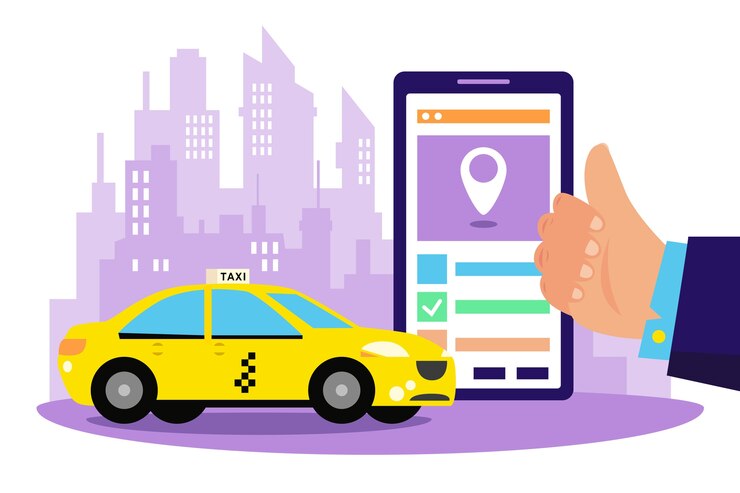Uber-Like Taxi App Development: A Roadmap For Success in 2024

Big names like Uber were pioneers of the on-demand ride-hailing industry, transforming how people move around cities. These user-friendly apps offer convenience, transparency, and safety, making them a popular choice for millions. Developing your own Uber-like taxi app can be lucrative if you’re an entrepreneur looking to capitalize on this trend. But where do you begin? This roadmap will guide you through the crucial steps in building and launching a successful ride-hailing app.
Understanding the Core Concept
An Uber clone script provides a foundational framework replicating the core functionalities of the original app. This serves as a springboard for creating your customized platform, incorporating unique features and branding.
Here are some key functionalities to consider:
- User-Friendly Interface: Both rider and driver apps should be intuitive and easy to navigate. A clean layout with clear buttons and minimal text is essential.
- Real-Time Tracking: Riders crave transparency. Allow them to track their driver’s location in real time, fostering trust and reducing anxiety.
- Secure Payment Integration: Seamless and secure in-app payments are critical. Integrate multiple payment options, such as credit cards, debit cards, and digital wallets, catering to user preferences.
- Multi-Platform Accessibility: Expand your reach by making the app available on Android and iOS platforms. This ensures a maximum user base and avoids alienating potential customers.
- Rating and Reviews: A robust feedback system allows riders to rate drivers and vice versa. This promotes accountability, maintains service quality, and helps build trust within the platform.
- Dynamic Pricing: Implement a system that adjusts fares based on demand and supply. This ensures a fair price for riders while incentivizing drivers during peak hours.
Customization and Building Your Brand
While a base structure is necessary, cookie-cutter solutions won’t make you stand out. Here’s where customization comes in:
- Distinctive Look and Feel: Develop a unique app icon, logo, and color scheme that resonates with your target audience. A strong brand identity fosters user recognition and loyalty.
- Value Proposition: Identify a gap in the existing market. Do you cater to a specific niche, such as luxury rides or eco-friendly vehicles? Highlight your unique selling proposition to attract a dedicated user base.
The Development Process Demystified
Building a robust app requires careful planning and the right technical expertise:
- Selecting the Right Tech Stack: The tech stack refers to the programming languages, frameworks, and databases that power your app. Popular choices for ride-hailing apps include React Native for cross-platform development, Node.js for backend development, and Google Maps Platform for location services.
- Building a Minimum Viable Product (MVP): Don’t try to build everything simultaneously. Start with a basic version of your app, the MVP, that offers core functionalities. Launch this to a limited audience and gather valuable user feedback. This allows for iterative improvements and reduces initial development costs.
- Scalability and Security: As your user base grows, your app must handle increased traffic. Design with scalability in mind to ensure smooth operation.
Market Research and User Acquisition
A successful app launch hinges on understanding and effectively reaching your target market. Here’s how to get started:
- Market Analysis: Research existing ride-hailing services in your target region. Identify their strengths and weaknesses to position your app competitively.
- Identify Your Ideal User: Who are you trying to reach? Young professionals? Budget-conscious travelers? Families? Understanding your target audience allows for targeted marketing strategies.
- Crafting a Marketing Plan: Use online and offline marketing strategies. Gain visibility through social media marketing, influencer partnerships, and app store optimization. Consider offering launch discounts or referral programs to incentivize early adopters.
Legal and Regulatory Considerations
The ride-hailing industry is subject to regulations that vary depending on your location. Here’s what to keep in mind:
- Licenses and Permits: Research and obtain any necessary licenses and permits to operate a ride-hailing service in your region.
- Insurance Requirements: Ensure riders and drivers are adequately insured in case of accidents.
- Data Privacy Regulations: To protect user information, comply with data privacy regulations like GDPR (General Data Protection Regulation) and CCPA (California Consumer Privacy Act).
Staying Ahead of the Curve
The ride-hailing industry is constantly evolving. Here are some future trends to consider integrating into your app:
- Multimodal Transportation: Expand beyond just taxis. Consider integrating other transportation options like bikes, scooters, or carpooling
The Power of Big Data and AI
Leveraging big data and artificial intelligence (AI) can significantly enhance your app’s functionality and user experience. Here are some ways to incorporate these cutting-edge technologies:
- Surge Pricing Optimization: Use historical data and real-time demand patterns to predict surge pricing more accurately. This ensures fair pricing for riders while maximizing driver earnings during peak hours.
- Route Optimization: Implement AI-powered route optimization algorithms to suggest the most efficient routes for drivers, considering factors like traffic congestion and road closures. This reduces travel time and improves rider satisfaction.
- Predictive Maintenance: Analyze vehicle data to predict potential maintenance issues before they arise. This helps prevent breakdowns, keeps drivers on the road, and ensures rider safety.
- Personalized Recommendations: The app can use user data to recommend specific services or features. For example, a frequent rider might receive promotions for luxury car options, while an eco-conscious user could be notified about carbon offset programs.
Building a Strong Driver Network
A robust network of reliable drivers is crucial for the success of your app.
- Competitive Rates and Incentives: To keep drivers engaged and motivated, offer fair compensation packages and attractive incentives like bonuses and referral programs.
- Transparent Communication: Maintain open and transparent communication with drivers. Regularly address their concerns and provide them with the necessary support.
- Safety Measures: Prioritize safety for both riders and drivers. Implement background checks for drivers and integrate features like emergency buttons within the app.
Conclusion
Developing a successful Uber-like taxi app requires a well-defined strategy, a strong development team, and a commitment to continuous improvement. You can carve out your niche in the ever-growing ride-hailing market by focusing on user experience, building a strong brand, and staying ahead of the curve with innovative features. Remember, the key to success lies in providing exceptional service, fostering trust within your platform, and creating a win-win situation for riders and drivers. You can turn your app idea into a thriving on-demand transportation business with dedication and a commitment to excellence.










